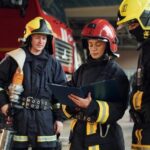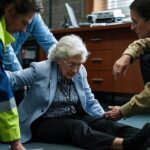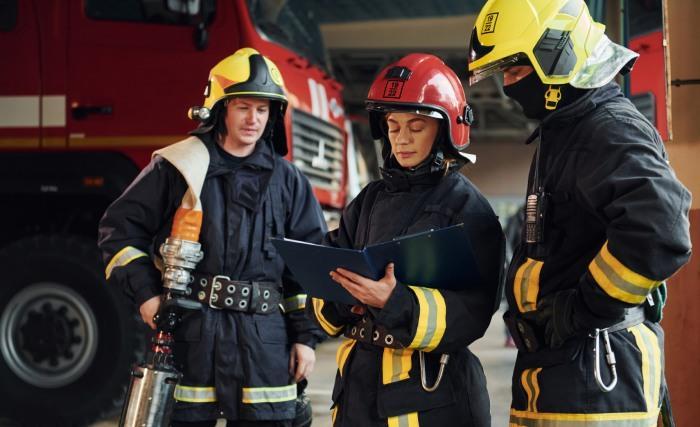In today’s fast-changing risk environment, healthcare professionals need strong skills to respond quickly and effectively during emergencies. Whether facing natural disasters or mass casualty events, proper emergency preparedness training helps them make vital decisions under pressure. It also enables smooth coordination with emergency teams to protect patient lives. Overall, this training boosts healthcare system resilience and readiness for large-scale public health crises. For additional details, visit here.
Understanding the Importance of Emergency Preparedness in Healthcare Settings
Emergency preparedness is vital for resilient healthcare systems, ensuring patient safety and care continuity during crises. Healthcare professionals need comprehensive training to handle events like natural disasters, pandemics, and bioterrorism. The CDC stresses the importance of preparedness in reducing disaster impacts on healthcare and communities.
Healthcare settings face complex emergency challenges, requiring trauma care, triage, and mass casualty management expertise. Preparedness includes technical skills and strategic systems like ICS for multi-agency coordination. Providers must be trained in BLS and ACLS to manage critical cases swiftly.
The PHEP Program notes that readiness also involves disaster risk reduction and communication strategies. Groups like the American Red Cross promote CPR and first aid training for both healthcare workers and the public to strengthen community resilience.
Key Components of Emergency Response Training for Healthcare Professionals
- Emergency response training is multifaceted, incorporating a spectrum of disciplines and competencies essential for frontline healthcare providers.
- Simulation-based training, a practice endorsed by entities like the Resuscitation Academy and supported by equipment manufacturers such as Laerdal Medical and Philips Healthcare, allows practitioners to engage in realistic scenarios, refining skills in trauma care, hazardous materials response, and crisis management.
- Healthcare provider training often includes paramedic training modules accredited by the National Association of Emergency Medical Technicians (NAEMT), focusing on pre-hospital emergency care, emergency response protocols, and advanced interventions
- CPR training and first aid certification, frequently conducted by the American Heart Association and American Red Cross, serve as fundamental pillars in this educational framework.
- Mass casualty management instruction emphasizes rapid medical triage techniques and coordination within the emergency operations center (EOC), ensuring optimal resource deployment in overwhelming situations.
Common Types of Emergencies in Healthcare and Their Unique Challenges
Healthcare professionals confront varied emergencies, each presenting distinct operational and clinical challenges. Natural disasters such as hurricanes or earthquakes require rapid adaptation to infrastructure damage, potential hazardous materials exposure, and patient surges. In such contexts, disaster preparedness protocols emphasize disaster risk reduction and resource prioritization through the incident command system.
Mass casualty events, whether from accidents or terror attacks, activate complex medical triage systems aimed at maximizing survival outcomes. Trauma care education is critical for rapid assessment and intervention, supported by continuous training in advanced cardiac life support and basic life support procedures. The National Highway Traffic Safety Administration (NHTSA) and organizations like the Emergency Nurses Association offer specialized courses addressing these complex needs.
Role of Healthcare Professionals in Disaster and Emergency Scenarios
Healthcare professionals are pivotal in executing emergency response protocols, delivering clinical care, and supporting overall crisis management efforts. Providers trained in emergency medical training, including paramedics and emergency nurses, act as first responders within healthcare facilities and communities.
Their responsibilities encompass performing medical triage, administering trauma care, and executing advanced life support techniques to stabilize patients. Additionally, healthcare personnel must engage in risk communication, effectively conveying critical information to patients, families, and the public to mitigate panic and promote compliance with safety measures.
Simulation-Based Training and Its Benefits in Emergency Preparedness
Simulation-based training is a key component of emergency medical education and disaster preparedness. It offers healthcare providers and responders hands-on experience with realistic scenarios such as mass casualty management, triage, and hazardous materials response. High-fidelity mannequins and virtual reality tools from leaders like Laerdal Medical, Zoll, and Philips enhance the realism of these exercises.
Organizations like the American Red Cross and NAEMT use simulation to let participants practice emergency protocols in controlled, real-world-like environments. This method builds essential skills in trauma care, ACLS, and BLS. It also promotes familiarity with the incident command system (ICS), essential for efficient crisis response.
Communication Strategies and Team Coordination During Emergencies
Effective communication and team coordination are vital components of successful emergency response and disaster preparedness. In public health emergencies, clear, concise, and timely information dissemination facilitates optimal patient outcomes and mitigates risks. Emergency response protocol emphasizes establishing robust communication channels between all stakeholders — emergency medical services (EMS), hospital staff, public health officials, and governmental agencies such as the Centers for Disease Control and Prevention (CDC) and the Federal Emergency Management Agency (FEMA) Emergency Management Institute.











